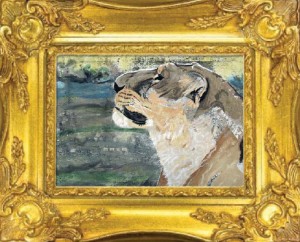 In her famous book The Artist’s Way, Julia Cameron states: Art is an act of tuning in and dropping down the well. It is as though all the stories, painting, music, performances in the world live just under the surface of our normal consciousness. Like an underground river, they flow through us as a stream of ideas that we can tap down into. As artists, we drop down the well into the stream. We hear what’s down there and we act on it…”
In her famous book The Artist’s Way, Julia Cameron states: Art is an act of tuning in and dropping down the well. It is as though all the stories, painting, music, performances in the world live just under the surface of our normal consciousness. Like an underground river, they flow through us as a stream of ideas that we can tap down into. As artists, we drop down the well into the stream. We hear what’s down there and we act on it…”
What if the Stream Dries Up? Literally
Changes in the environment, eco-system and animal kingdom may seem to be concerns of scientists and environmentalists, but the role of nature in the creation of art is essential. Inspiration is taken from natural scenes and from the animal world by painters, composers, musicians, actors and dancers. Since nature can translate into art, so too could extinctions in nature become extinctions in art.
Of course, unlike nature, art does not already exist it needs to be created, and it is created by inspiration. In terms of inspiration, the most important part of the universe has long been the natural world (as distinct from its man-made counterpart), writes Ian Jackman in his book The Artist’s Mentor. This visual translation of nature may seem easily apparent in many different art forms, from landscape oil paintings to the dance techniques of Loie Fuller (a pioneer of modern dance who conceived nature-based choreography) to the nature sketches and watercolors documenting the local wildflowers of Quincy, Illinois by the late Dudley sisters, Gladys and Ruth.
There are more indirect ways nature is used as inspiration in art, as well. Some artists use various combinations of what they derive from nature in shape, form or color with their own personal vision. The modern sculpture of Henry Moore and the illustrations of recent Caldecott winner and Ann Arbor resident Erin Stead are examples of this influence.
Inspiration and Connection With Nature
Whether an artist is fully or partially inspired by nature, they re-express it in a meaningful way. As Vincent van Gogh once wrote, I think a pai nter is happy because (they are) in harmony with nature as soon as (they) can express what (they) see. He could be indicating that when an artist feels they are successfully producing their unique, literal perception of nature, they feel closer to their subject (nature). Another possible explanation of van Gogh’s meaning involves the innate role humans play in the natural world. Before an artist even puts pencil to paper, paintbrush to canvas or thought to physical form, they are already a part of nature. Perhaps, expressing what they see is then both a validation of that connection and an addition to it, which gives them the feeling of Harmony with nature van Gogh expressed.
nter is happy because (they are) in harmony with nature as soon as (they) can express what (they) see. He could be indicating that when an artist feels they are successfully producing their unique, literal perception of nature, they feel closer to their subject (nature). Another possible explanation of van Gogh’s meaning involves the innate role humans play in the natural world. Before an artist even puts pencil to paper, paintbrush to canvas or thought to physical form, they are already a part of nature. Perhaps, expressing what they see is then both a validation of that connection and an addition to it, which gives them the feeling of Harmony with nature van Gogh expressed.
Changes in the natural world due to climate change and species extinction put this unique aspect of human nature at risk. With every extinction in nature, we lose an opportunity to experience harmony, connection and artistic inspiration, and the opportunity to share art with the world. None of the artists mentioned in this article would have been the same artists, or even artists at all, had they not had access to a living source motivation and creative inspiration.
Creating Change, Preserving Beauty
Today, artists are recognizing the importance of nature and are turning to their art to help preserve it. The Dudley sisters created a book of their wildflower art to compel people to save wildflowers by educating them about growing and protecting native plant species. Similarly, environmental artist Jason deCaires Taylor designed underwater sculptures to help the coral reef off of the coast of Grenada, an island in Mexico. His sculptures are designed to allow the marine life to establish new homes and help ensure the continuation of aquatic life in the region.
Dr. Paul Jepson, who teaches about environmental protection at the University of Oxford says, People… need to find different ways of getting involved with the world. Artists should get involved in environmental matters so it is not just scientists trying to get the message out there.Whether it’s by producing books, environmental art, music, films or any other creative endeavors, artists can communicate that message with an extraordinarily striking impact. As much as the natural world inspires art, it’s now time for artists to harness their gifts and inspire protection of the beautiful world that surrounds us.
![]()
Click here to be introduced to Natural Awakenings Magazine of Wayne County
Source: Natural Awakenings Magazine of Wayne County



